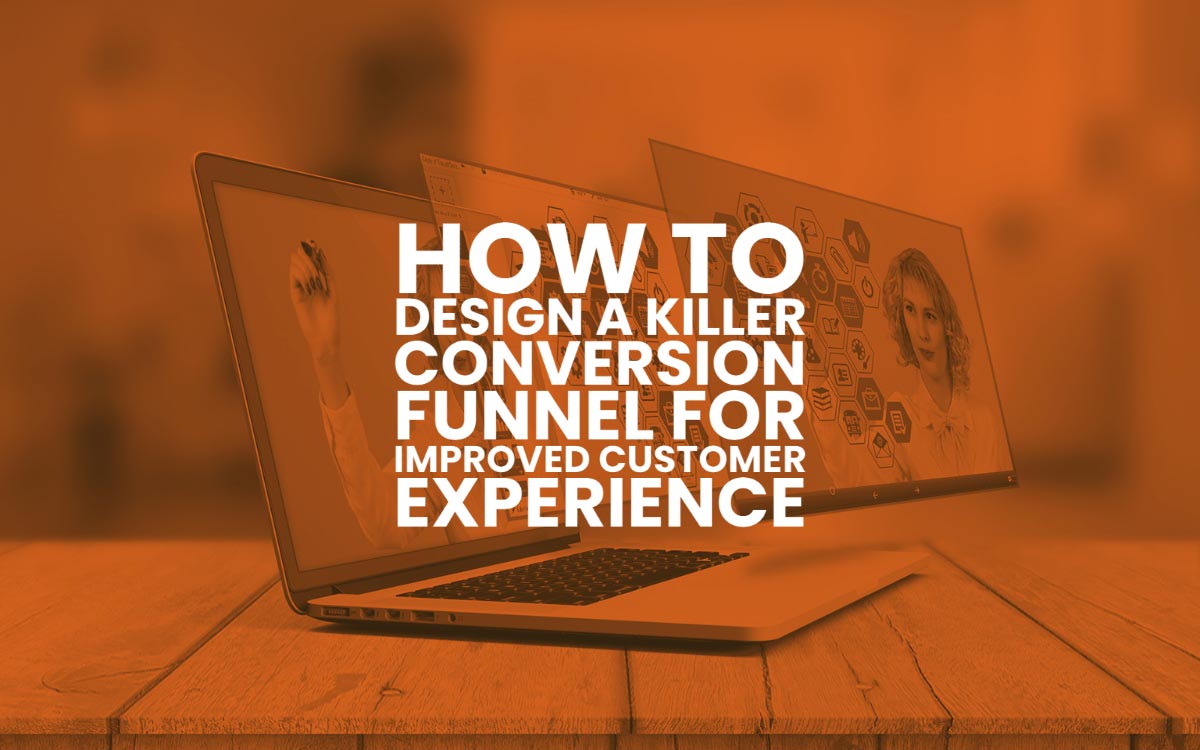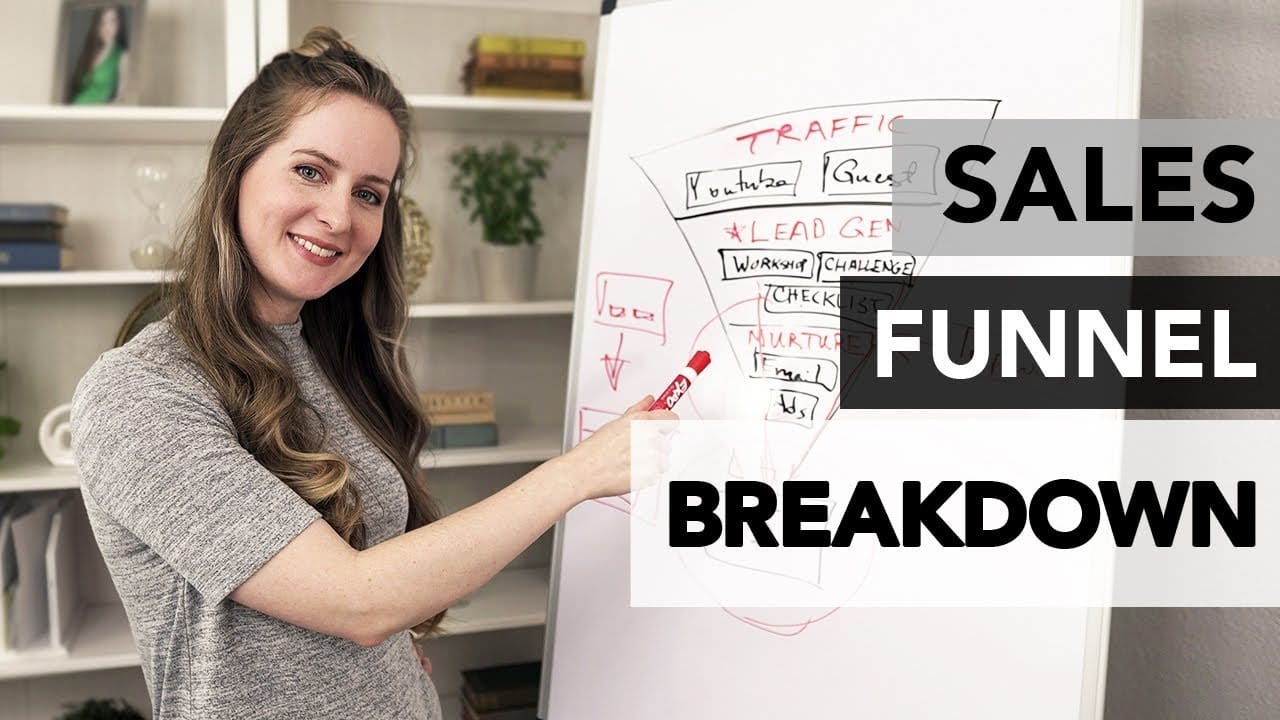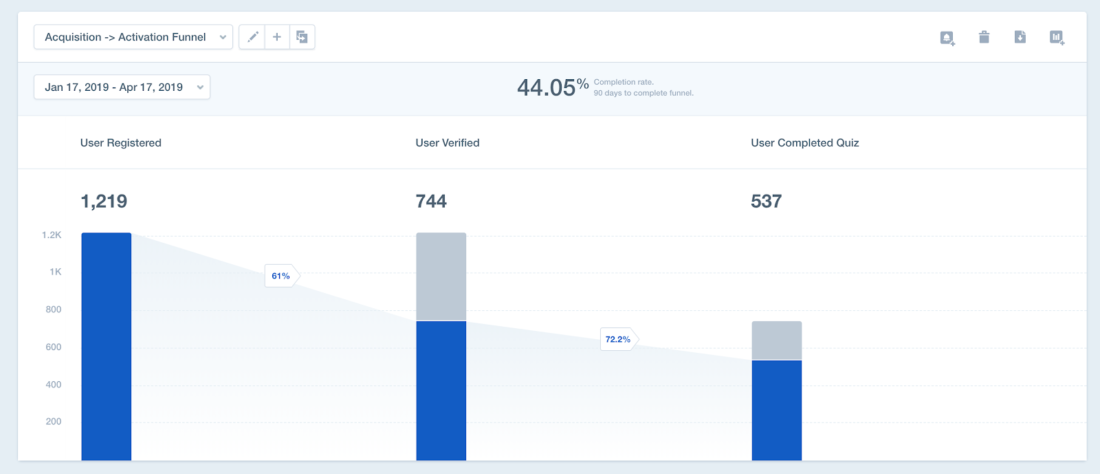
18 Feb How To Design A Conversion Funnel For Improved Customer Experience
How To Design A Conversion Funnel For Improved Customer Experience
Did you know that a startling 68% of organisations have not ever identified or attempted to measure their sales funnel?
A big mistake. Not counting your sales metrics is like not grading students during exams–you’ll never understand how well your brand is ‘performing’ till it’s scored.
Furthermore, According to ClickFunnels, “Only 1% of its customers have generated over a million dollars using a single sales funnel.” Sounds too good to be true, right? But this is the beauty of a conversion funnel that’s built to deliver.
In other words, measuring your sales funnel can throw light on why your prospects might be leaving and what you need to do to enhance your customer experience.
This blog will uncover top tricks, tips, and hacks to design a high-quality conversion funnel that contributes to your bottom line while keeping your customers loyal and happy. But first, let’s understand what we mean by a conversion funnel.
What Is A Conversion Funnel?
A conversion funnel visualises and reflects the various stages in the buyer’s journey leading to purchase. It is often categorised into three sections:
1. Upper or top of the funnel: Where the user does is beginning to know the brand, how it can cater to their needs, and engages in active research
2. Middle of the funnel: Where the user is relatively familiar with their needs, their expectations from the brand, and the brand’s offering
3. Lower of the funnel: Where the user has zeroed in on their favourite brand and digs into reviews to gather more information about the brand so that they can complete the purchase
As a marketer, depending on the level at which your prospect lies, you’ll want to deploy a host of marketing tactics to boost your conversion rates. This blog lends a helping hand in this regard. Moving on, let’s deep-dive to understand the four stages of a conversion funnel.
The Four Stages Of A Conversion Funnel
The unifying goal that characterises every conversion funnel is driving users to take the desired action or proceed to the final conversion stage (aka making a purchase).
Stage 1: Awareness
This stage is all about reeling your customers by creating awareness about your products/services. First, you need to understand the source of your quality traffic (think: Google search results, blog post, a referral from a friend, etc.) so that you can tailor the right marketing tactics to pull your prospects in.
To make the most of this stage, brands typically use advertising, content marketing, social media marketing, and organic search. This ultimately allows marketers to target the right customers.
Stage 2: Interest
Once you have a steady stream of traffic coming into your website, you can think of ways to engage your leads. This could be done by offering high-quality blogs/ebooks/webinars for free. In marketing terms, we call this micro-conversions.
You could also drive campaigns that centre around unbeatable deals and offers, in addition to making your website/app aesthetically pleasing.
Some brands also offer discounts in exchange for newsletter sign-ups by users or demonstrate social proof in the form of customer reviews, case studies, and testimonials.
As you might have guessed, the idea is to pique your prospect’s interest by offering relevant insights and data so that they ‘consider’ going ahead with your product/service.
Stage 3: Decision
The next logical step in the conversion funnel is to build trust and loyalty so that your prospects can move down the funnel. You could drive highly-personalized and targeted email marketing campaigns that can propel your prospects to action.
Stage 4: Action
The last-yet-most important piece of the puzzle is the “Action” stage. You want your leads to make a purchase and turn into lifelong loyalists of the brand. If you notice that most of your leads end up jumping ship in the last stage of the conversion funnel, you’ll need to rethink your lead nurturing tactics. As a thumb rule, you should follow up with a customer to understand what went wrong and why they didn’t move ahead with the desired action.
Pro tip: Note that once your customer has made a purchase, your real job begins. This includes offering 24×7 support, requesting customers to provide in-depth and real-time feedback, and driving strategies to further boost your customer’s experience and strengthen the relationship.
Often, the slightest tweaks and improvements across the various stages in your conversion funnel can have the most significant impact on your bottom line. In the next section, we will look at how you can optimise your conversion funnel, boost your ROI, and bridge the gap that leads to funnel ‘leaks’ and, by extension, a disappointing customer experience.
Top-8 Ways To Create A Conversion Funnel For Better CX
1. Invest in an onboarding program.
A streamlined sales funnel starts with an exceptional onboarding process. Take the case of Apartner, a dating platform that optimised its conversion funnel by eliminating a critical bottleneck in its onboarding flow.
The problem: Upon launch, the brand had amassed over 2,000 sign-ups. However, the data showed that many users never completed their profile (by answering a questionnaire) to receive relevant matches. The root cause? On signing up, users had to verify their email address by moving away from the site–this proved to be a significant pain-point in the onboarding flow:


The solution: The team changed its onboarding flow, where email verification was now done after completing their questionnaire.
More importantly, it re-engaged existing users to take the next step (complete questionnaire or verify email) by rolling out a highly-personalized email campaign:
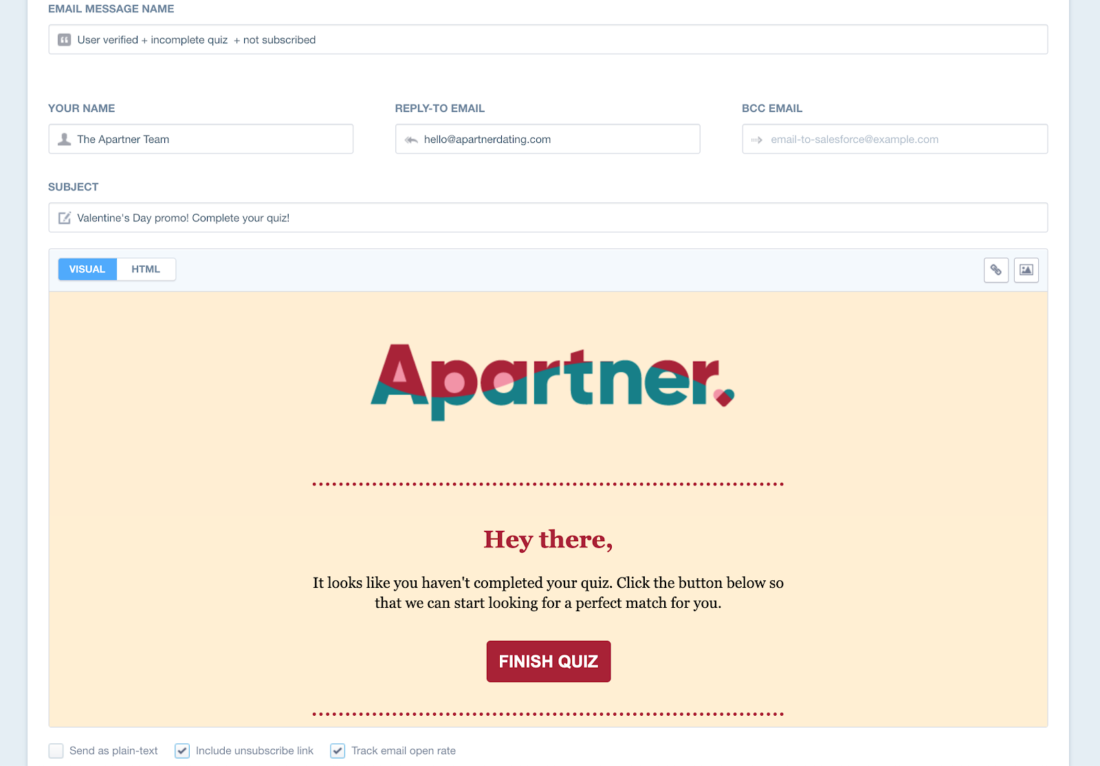

If you still don’t know where to begin, this is what a user onboarding funnel looks like:
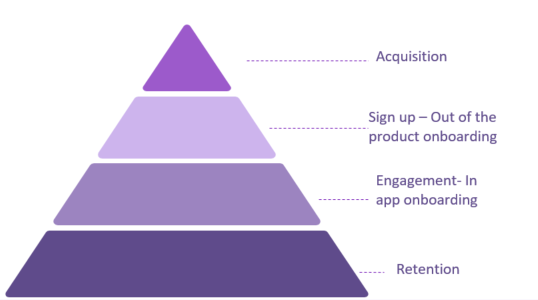
Here are the top-7 best practices to follow when onboarding users:
- Think about user onboarding as a seamless flow, not a singular screen:
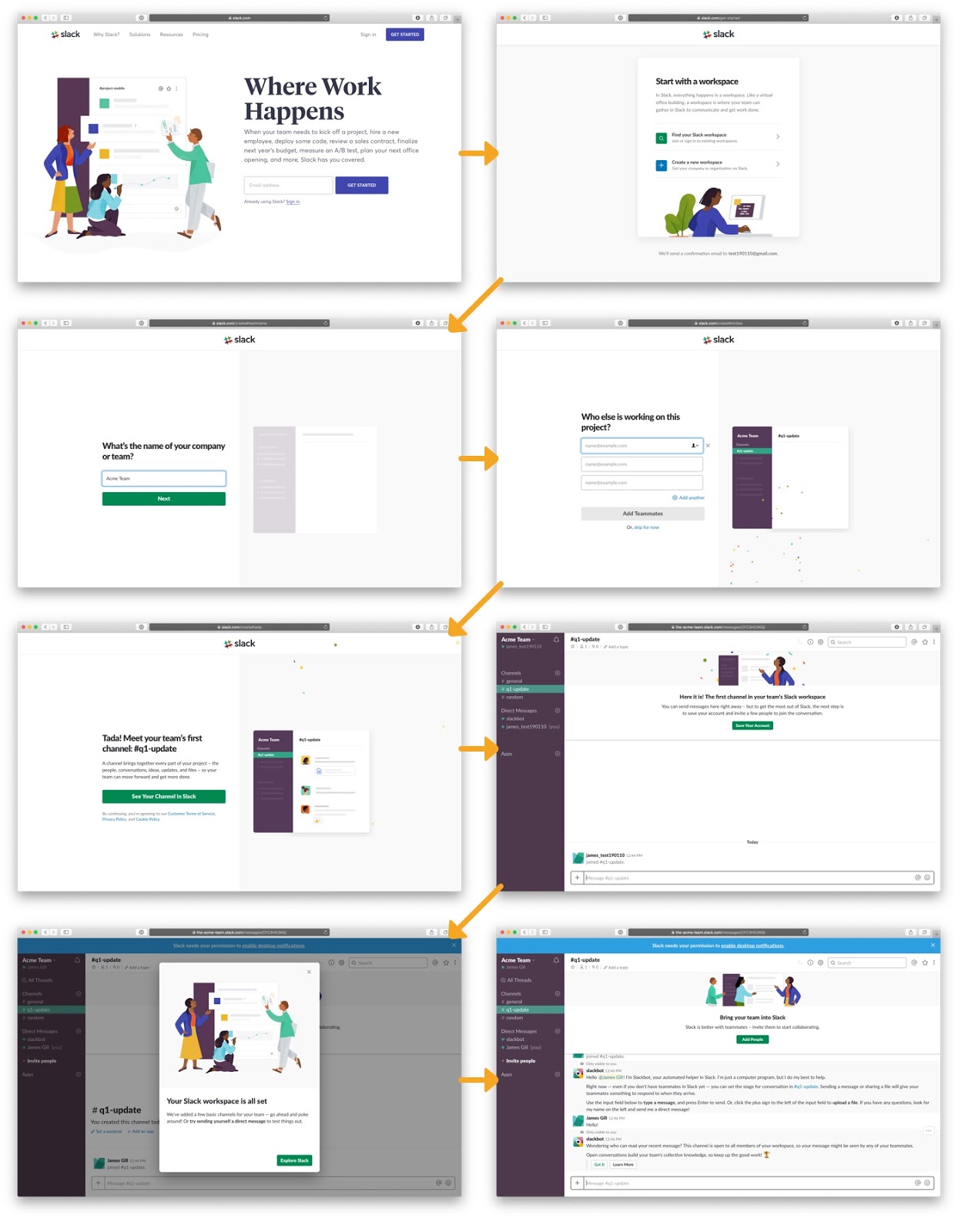
- Keep the number of steps in your onboarding flow to a minimum.
- Gamify your onboarding process.
- Always show user progress during the different stages of the onboarding process.
- Map out your email sequence for user onboarding.
- Ensure that the onboarding experience is mobile-optimized.
- Monitor the effectiveness of your onboarding flow.
2. Use live chat support as the first phase of the conversion funnel.
One of the most sure-shot ways of boosting conversion rates is by offering your customers real-time support convenient and practical. This is where using live chat software can drastically improve your customer experience:
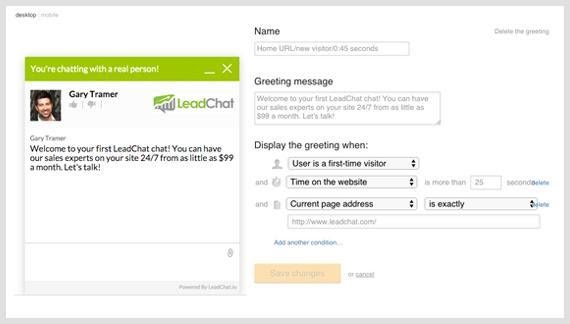
Since customers today spend a considerable amount of time researching products/services, having a live chat option can prove to be a handy tool for customers.
You can also integrate your live chat tool with all the relevant information that your customers may need so that it can educate and engage your customers while they get to know your brand:
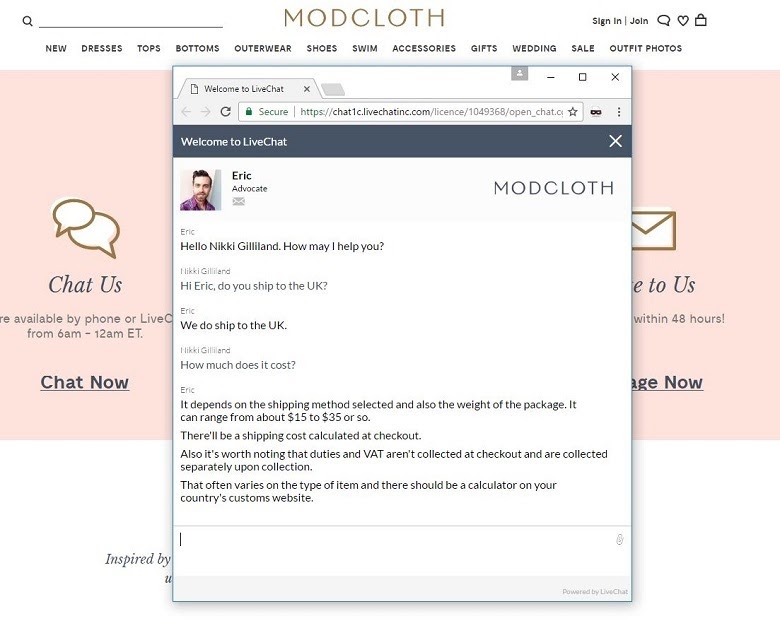

Finally, live chat can add a ‘personal touch’ to the buying experience, allowing agents to proactively reach out to customers and offer guided support, as Warby Parker’s live chat service demonstrates below:
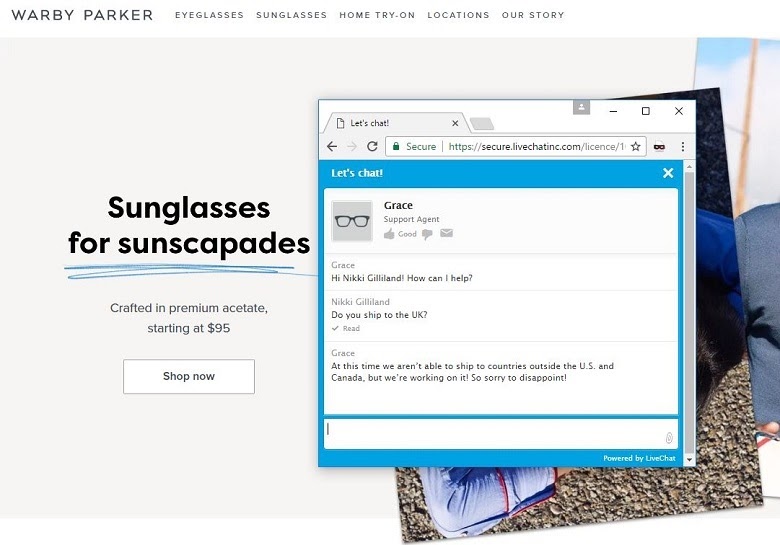

Pro tip: It is highly recommended that you pay special attention to training your support agents to guide users towards the end of the conversion funnel.
This can be done by first understanding where the customers are in the conversion funnel and their issues.
An informed account of your user will help enhance the overall customer experience, allow your agents to provide customised and contextual solutions, and leave your customers coming back for more.
3. Add a relevant CTA on the landing page for higher chances of conversion.
When it comes to driving your conversion rates, you need to guide your prospects at every stage of the conversion funnel. The top, as well as the middle sections of the conversion funnel, should include clear calls to action (CTAs) and contact information, especially on your landing pages, as shown below:
- CloudSpot uses a lead magnet tactic to encourage people to download their app in exchange for the user’s email list:
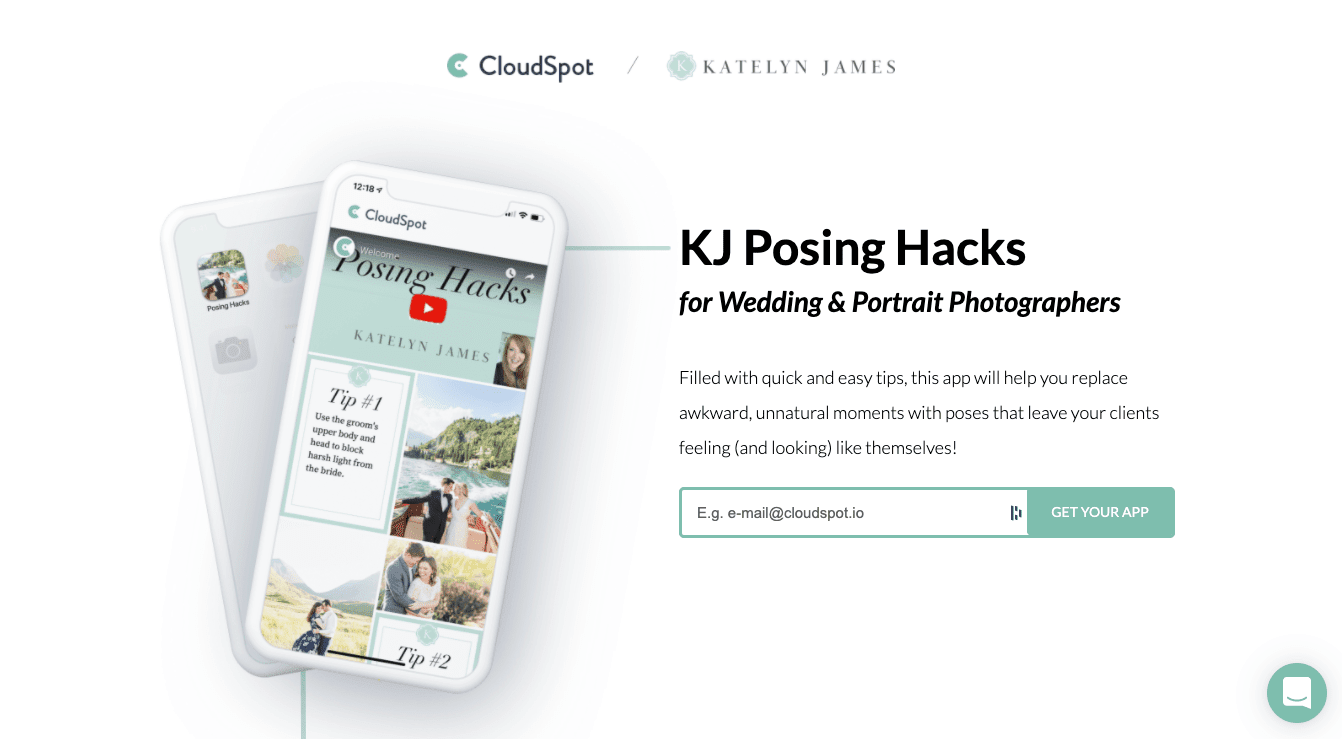

- The Listing Lab’s CTA button is accompanied by a strong headline, contextual copy, and telling visual cues:
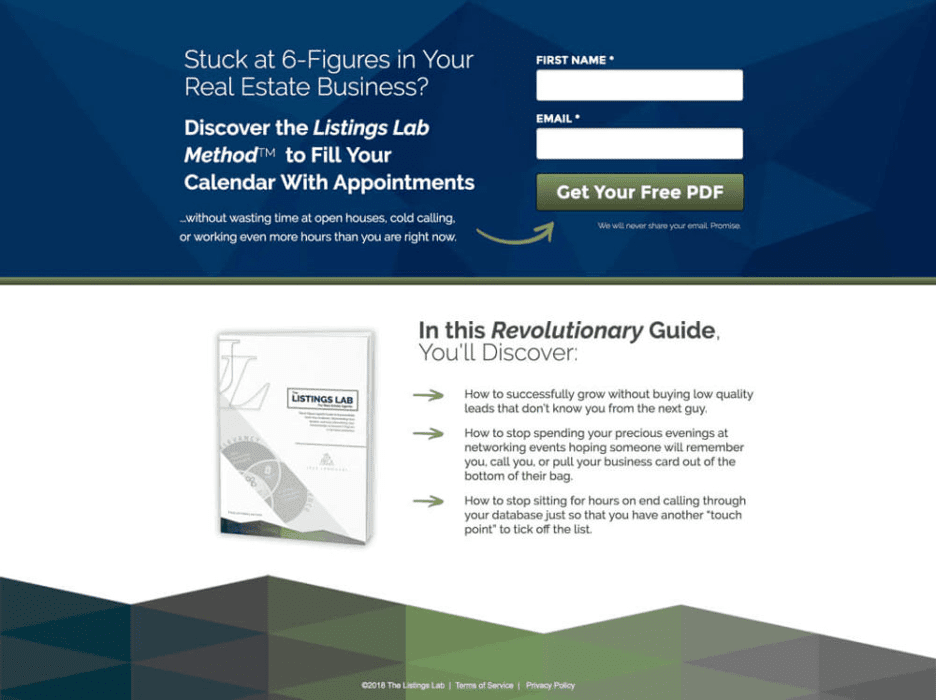

The end-goal is to nudge your customers to take the desired action by providing relevant visual cues in CTA buttons.
- Shoelace repeats the same CTA time and again to reinforce the message in the reader’s mind and effectively so:
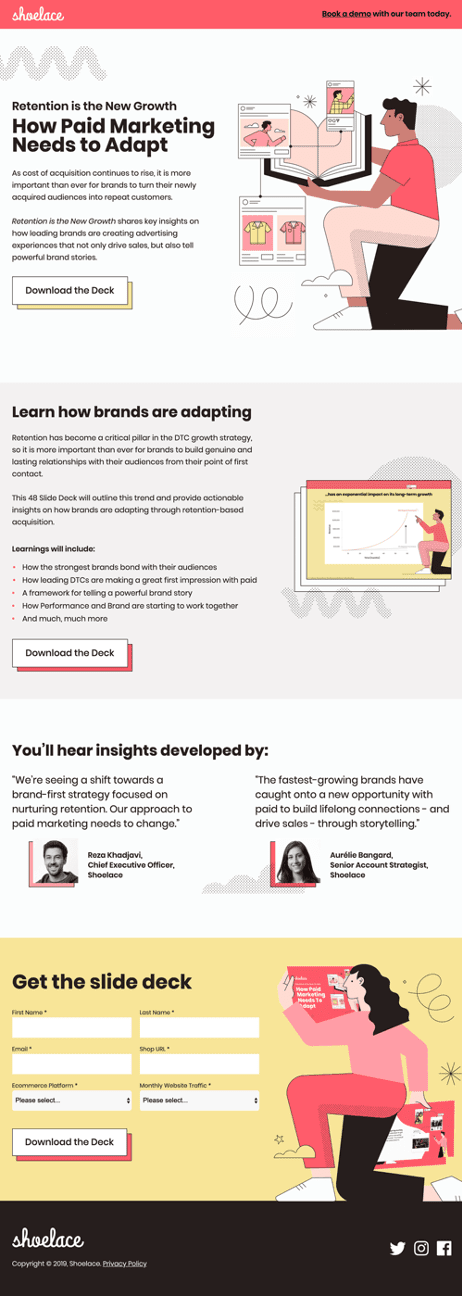
4. Work on user persona and design the funnel accordingly.
Top-performing brands with the highest conversion rates have one thing in common: They understand their ideal buyers inside out. In sales parlance, we call this feat acing the “buyer persona.” A user persona helps:
- Analyse and understand your buyer’s behaviour, pain points, motivations, likes and dislikes, demographics, etc.
- Understand your customer’s preferred communication channels
- Understand what kind of content and messaging your prospect would like to consume
Here’s an in-depth example of a buyer persona that uses real-world customer quotes (extracted from interviews) to add character and depth to their persona profile:
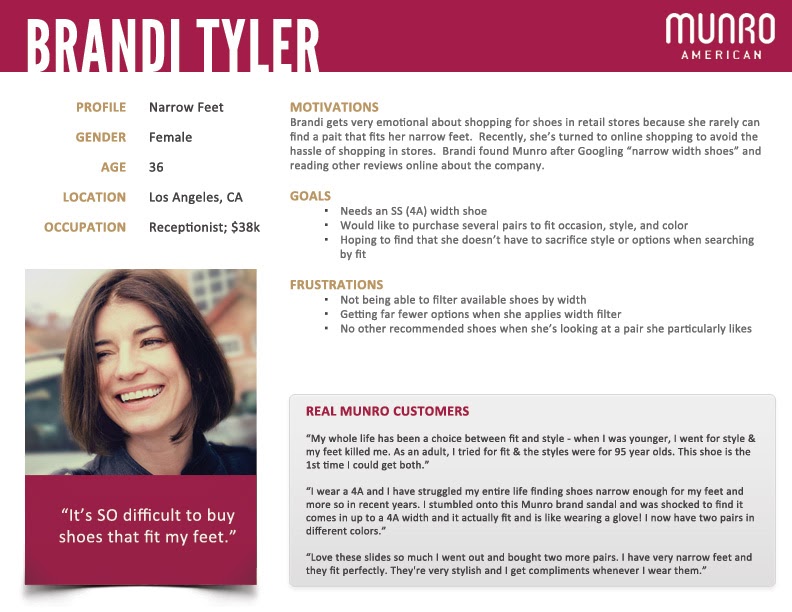

All in all, a buyer persona worth its salt should accurately reflect the journey of your brand’s ideal buyer.
To get an accurate persona, you should put yourself in the customers’ shoes and think about the various actions and thoughts your buyers are bound to experience while interacting with your brand across multiple stages of the conversion funnel.
This valuable data can then be used to curate relevant and personalised campaigns and convert more prospects into customers.
5. Focus on technical SEO aspects while building the conversion funnel.
SEO-optimized content lays the foundation for optimised and organic traffic conversions. Here are the top-7 SEO best practices to follow:
- Bid on competitor terms and get a list of rich keywords and your competitor’s target audience.
- Use the right set of query-based keywords across all kinds of content you put out, such as blogs, emails, white papers, FAQ pages, industry updates, etc., to get a high ranking on SERPs. You can use Google’s Keyword Planner to get a list of optimised keywords.
- Create a rich repository of blog posts that contain relevant search terms.
- Design exciting content such as infographics, checklists, and comparison blog posts to drive user engagement.
- Optimise your existing landing pages with long-tail keyword tools.
- Write guest blogs for established, high-authority websites.
- Focus on your on-site search by curating new content for questions that haven’t yet been answered on your website, however, in addition to churning out high-quality reviews, testimonials, and case studies.
6. Perform A/B testing on your landing page that’s responsible for the conversion.
A/B testing your landing page is one of the easiest and most effective ways to boost the conversion rate. Here’s a quick run-through of what the A/B testing process looks like:
Step 1: Deep dive into your data (read: surveys, heat maps, user recordings, Google Analytics, etc.) to set your A/B testing goals. Why do you need to A/B test, and what elements in particular?


An example of a heat map that demonstrates areas on a website that users are paying particular attention to (think: email opt-in form).
Step 2: Develop a hypothesis that answers the following question: “What are you trying to improve with the A/B test?”
Step 3: Make iterations as necessary and build your test variations.
Here’s an example of an A/B test by Hubspot where the “Red” coloured CTA button ended up converting better than the “Green” coloured variant:
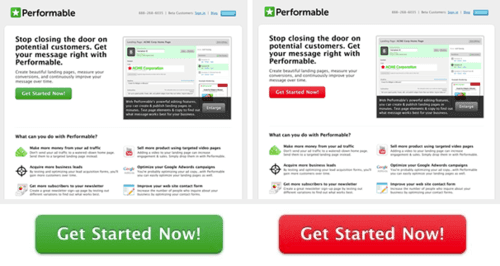
7. Add voice search functionality for personalised CX.
According to PwC, “65% of consumers aged between 25-49 years old talk to their voice-enabled devices daily.” In other words, voice search is on the rise, and more and more customers are making their ‘voices’ heard (pun intended). Here are the top-3 ways in which you can use voice search to personalise your customer experience and skyrocket conversion rates:
- Build content that’s centred around your user’s questions. As per data, “Nearly 10% of voice search queries begin as actual questions – who, what, when, where, why, and how.”
- Create a My Business Profile on Google so that your brand’s name pops up in all local searches. Why? Because research indicates that 51% of consumers would use voice search to find a local business near them.
- Ensure that your website is mobile-friendly, as 20% of mobile queries are now voice searches.
8. Invest in managing your conversion analytics.
Understanding the efficacy of your conversion strategies allows you to derive the maximum benefits from your conversion funnel. Here are the top 7 metrics to track and stay ahead of the conversion game:
- Traffic sources such as direct visitors, search visitors, and referral visitors
- Interactions per visit and user behaviour
- New visitor conversion rate, which includes understanding what your new users are finding interesting on your website/app/any other platform
- Return visitor conversion rate, which includes understanding why your customer came back
- Cost per conversion or lead generation costs
- Exit pages, which include understanding which pages are causing people to leave
- Bounce rate, which refers to the number of visitors visiting your site and immediately going away without doing anything
On A Final Note
A high-converting sale funnel is a lot of work, but if done right, it pays off. Marketers need to consistently stay updated with the latest conversion trends and look at ways to boost their sales efficiency.
It is also important to remember that while not all customers will convert at all times, the important ones that matter will convert with the tactics and strategies mentioned above in place. Thoughts?
Author Bio: Dhruv Mehta is a Digital Marketing Professional who works at Acquire and provides solutions in the digital era. In his free time, he loves to write on tech and marketing. He is a frequent contributor to Tweak Your Biz. Connect with him on Twitter or LinkedIn.
